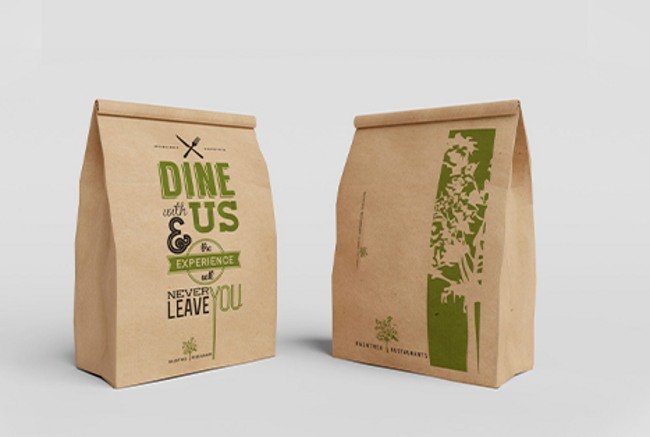In the highly competitive retail market, thousands of brands compete with one another for customers’ attention. However, to stand out from the competition, a company must ensure its packaging design is consistent with the product to attract people. Companies should strive to develop products that improve the quality of their target audience’s lives in some way. Your brand can easily differentiate itself from the competition by using Bagged Packaged Goods. They also help you save money and cut down on the price of packaging doing so.
What Are Bagged Packaged Goods?
Bag packaging is a great way to stand out from the competition.
- Regarding food, bag packaging can help protect products from damage during transportation and storage. It can also help to keep products fresh. Bag packaging can also promote sales by making it easier for customers to identify and purchase products.
- Regarding beauty products, bag packaging can help protect products from damage during transportation and storage. It can also help to keep products fresh. Bag packaging can also promote sales by making it easier for customers to identify and purchase products.
- In addition to promoting sales, bag packaging can also help improve product quality.
- Also, Bag packaging is a great way to improve product quality, appeal, and safety. Bag packaging may be the perfect solution to stand out from the competition.
Bag Packaged Goods for Retail Business

There are many benefits to using bag packaging for retail businesses. For one, it can help products stand out from the crowd. Plus, it can add value to customers’ lives by allowing them to store their products safely and conveniently.
Of course, there are also a few things to consider when designing bag packaging for a retail business.
- First, it is crucial to match the product to the right bag. For example, if you are selling food items, it is important to use durable bags that can withstand the rigours of shipping.
- Second, it is vital to consider the design of the bags themselves. For example, you can use colourful prints or patterns to add appeal to your products. Additionally, you can use different types of materials to create unique designs.
- Finally, it is crucial to consider the overall branding of the business. For example, if your company sells beauty products, you can use attractive bag packaging to attract customers.
Why You Should Sell Bagged Goods in Your Store
It would be best if you started selling bagged goods at your store for various reasons, including those listed below. To begin, it might assist you in standing out from the crowd of other similar businesses. In addition, it can improve the quality of life for your customers.
The following are a few of the many reasons why it is a good idea to sell bagged goods:
1. It Has the Potential to Set You Apart From the Other Competitors.
When you offer items in bags, you increase the likelihood that people will notice you. It is because bagged products seem more enticing and can maintain their freshness for longer. In addition to this, it can assist you in developing a more distinctive brand for your retail establishment.
2. It Can Improve Your Customers’ Quality of Life.
You can make your clients’ lives more convenient when you sell items already packaged in bags. They no longer need to be concerned about their things becoming damaged or breaking apart. In addition, they can effortlessly transport their products wherever they go.
3. It Can Assist You in Developing a More Distinctive Brand for Your Retail Establishment.
You will be able to establish a more distinctive identity for your retail establishment if you sell bagged goods. It is because you can develop one-of-a-kind packaging for each of your products. In addition, you can entice a more extensive customer base to shop at your establishment.
Therefore, why not think about stocking your store with bagged things to sell? It has the potential to be an excellent technique to differentiate yourself from rival companies and to enrich the lives of your clientele.
Why Bag Your Groceries?

There are many reasons to bag your groceries. Not only does it help you save money, but it can also help you become more environmentally friendly. Here are five reasons to bag your groceries:
1. You’ll Save Money
Bagging your groceries will save you money on the costs of both the groceries and the bag. You’ll save even more if you’re buying items that require a bag, like produce or bakery items.
2. You’ll Reduce Your Carbon Footprint
Bagging your groceries reduces the amount of packaging that’s used. It reduces the amount of carbon released into the atmosphere, making you a more environmentally friendly consumer.
3. You’ll Cut Down on Waste
Only some things that have been packaged need to be bagged. If you’re buying bulk items, for example, you don’t need to bag them. Instead, put the items in a bag and store them in a container.
4. You’ll Protect Your Food
If you don’t bag your groceries, food can get damaged while transported. Bagging your groceries protects your food from damage and keeps it fresh.
5. You’ll Protect Your Items
If you leave your groceries unpackaged, items can get damaged. Bagging your groceries protects your items from damage and keeps them fresh.
Types of Bagged Packaged Goods
There are many types of bag packaged goods, each with its unique benefits. Here are many of the most common types:
1. Boxed Goods
Boxed goods are typically bagged packaged goods in a rectangular or square box. They can be delivered to the customer in any way you like, including through the mail or in person.
Boxed goods are a great option for products that don’t require a lot of packaging, such as cereal and snacks.
2. Canisters
Canisters are similar to boxed goods, but they’re packaged in a cylindrical shape. They’re a good option for products that need to be stored in a dry environment, such as canned goods.
Canisters are also a good choice for products that will be consumed quickly, such as fruit drinks and candy.
3. Baked Goods
Baked goods companies use a variety of packaging methods to protect their products. For example, bread companies use bread bags, and cake companies use cake boxes.
4. Candy
Candy companies use a variety of packaging methods to protect their products.
5. Toiletries
Toiletries companies use a variety of packaging methods to protect their products. For example, lip balm companies use lip balm tubes, and deodorant companies use deodorant sticks.
Types of Food Packaging Plastic Bags

There are many different types of food packaging plastic bags, each with its benefits. Here are the three most popular types:
1. Single-use bags: These are made of thin, lightweight material and designed to be used once.
2. Multi-use bags: Multi-use bags are made of a thicker material and are designed to be used multiple times. They are often made of polypropylene, a type of plastic that is less likely to be recycled
3. Compostable bags: Compostable bags are made of biodegradable material and are designed to be composted. They are often made of cornstarch or potato starch.
Why You Should Make the Switch to Packaging Bags
A product’s packaging is a vital component of any brand. It can provide value to customers’ lives in addition to helping to differentiate a product from its competitors in the market.
When it comes to things like food and cosmetic items, the packaging can be of very vital significance. Most people who purchase these items do so for their use, and as a result, they want to be certain that they are getting the most bang for their buck.
Another great benefit of choosing a product packaged in a bag is that it is easier to transport. When you are buying a product, you should be sure to take into account the size and weight of the product. Often, a product packaged in a bag will be lighter and easier to transport.
When choosing a product to purchase, it is important to consider the quality of the packaging. Often, a product packaged in a bag will be of a higher quality. It is because a product packaged in a bag will be resistant to damage.
Materials Used for Bagging Packaged Goods
However, if plastic is used for bagged packaged goods, it must be made from recycled materials. Recycled plastic is a popular choice because it’s environmentally friendly and doesn’t damage food.
In addition to paper and plastic, other materials used for bag packaging include cotton, linen, leather and linen blend. Each of these materials has its unique benefits and drawbacks.
For example, cotton is soft and absorbs water. However, it can also absorb smells and flavours. Linen is strong and resistant to water, but it’s not as soft as cotton. Leather is durable, but it can be expensive, and it doesn’t absorb water. And linen blend is a mixture of both cotton and linen.
When choosing the right material for bagged packaged goods, it’s important to consider the product and the target market. For example, paper-based bag packaging might be the best option if the product is delicate. But if the product is more rugged, then plastic might be a better option.
Guidelines for Designing Successful Bag Packaging for Food and Beauty Products

The following are guidelines for designing successful bag packaging for food and beauty products of bagged packaged goods:
1. Research the Target Market.
Before designing packaging for a food or beauty product, it is important to research the target market. Who are these customers? What are their needs? What are their wants? Once you understand your target market, you can create a packaging design that is specific to their needs.
2. Choose a Unique and Creative Design.
It is important to be creative when designing food or beauty product packaging. It means that you should not use the same design over and over again. You should use a unique and creative design to attract customers.
3. Use High-Quality Materials.
Regarding packaging for food and beauty products, it is important to use high-quality materials. It means that you should use durable materials that won’t break.
4. Consider the Cost of Production.
When designing packaging for food or beauty products, it is important to consider the cost of production. It means that you should design affordable packaging that won’t damage the product.
5. Consider the Effect of bagged packaged goods on the Product.
When designing food or beauty product packaging, it is important to consider the effect of the packaging on the product. It means that you should design packaging that doesn’t damage the product.
Pros and Cons
However, it’s important to understand the pros and cons of bagged packaged goods. Here are some of the main advantages and disadvantages of using bagged packaged goods:
Pros:
1. Convenient:
Bagged packaged goods are easy to transport and store.
2. Cost-effective:
Bagged packaged goods are generally less expensive than other types of storage containers.
3. Variety:
Bagged packaged goods come in various sizes, shapes, and colors. It makes it easy to find the perfect bag for whatever you’re transporting.
4. Durable:
Bagged packaged goods are usually made of strong, durable materials. It means they can withstand wear and tear better than other storage containers.
Cons:
1. Not Air Tight:
Bagged packaged goods are not airtight.
2. Not Flushable:
Bagged packaged goods are not flushable. You cannot simply flush them down the toilet after use.
Frequently Asked Questions
How Do I Create Bagged Packaged Goods?
There is no one-size-fits-all answer to this question. However, there are a few key steps that brands should take to create Bagged Packaged Goods.
- First, brands should consider the product that they are packaging.
- Second, brands should create visually appealing and functionally beneficial packaging.
- Third, brands should create products that add value to the lives of their customers.
What Are Some Common Uses for Bagged Packaged Goods?
There are a variety of uses for Bagged Packaged Goods. Some common uses include food products, beauty products, and home bagged packaged goods.
By using BPG, brands can help to create products that are both visually appealing and functional. Additionally, by packaging products in a visually appealing and functional way, brands can create products that people will want to purchase.
What Are Some Potential Challenges Brands May Face When Using Bagged Packaged Goods?
There are a few potential challenges that brands may face when using Bagged Packaged Goods.
- First, BPG can be expensive to create.
- Second, BPG can be difficult to package. Third, BPG can be difficult to sell. By using BPG, brands can help to create products that are both visually appealing and functional.
- Additionally, by packaging products in a visually appealing and functional way, brands can create products that people will want to purchase.
What Is the Difference Between a Bag and a Box?
A bag is a type of packaging made of durable material, such as plastic, paper, or cloth, usually rectangular or square of bagged packaged goods. A box is a type of packaging made of less durable material, such as paper or cardboard, usually rectangular or square of bagged packaged goods.
Why Is Packaging Important for a Brand?
Packaging is important for a brand because it helps it look unique and attract customers. The packaging design can also help to communicate the brand’s message to the customer.
What Are Some Ways That a Brand Can Improve Its Packaging Design?
A brand can improve its packaging design by using a unique design, a design that matches the product, a design that adds value to the product, and a design that is easy to understand.
Conclusion
Retailers are constantly seeking new methods to attract customers, and one of the simplest ways to differentiate oneself from competitors is by designing one’s product’s packaging. Not only does it need to have a good aesthetic, but it should also convey the brand’s ethos and communicate what it offers to customers.
A brand that wants to be successful needs to take an original approach to its packaging design. Brands may strengthen their relationships with their target audiences by developing products that give customers real value. Because of this, they will be able to bring in more clients and keep them for a longer time.




